I'm trying to code the fast Non Dominated Sorting algorithm (NDS) of Deb used in NSGA2 in immutable way using Scala.

But the problem seems more difficult than i think, so i simplify here the problem to make a MWE.
Imagine a population of Seq[A], and each A element is decoratedA with a list which contains pointers to other elements of the population Seq[A].
A function evalA(a:decoratedA) take the list of linkedA it contains, and decrement value of each.
Next i take a subset list decoratedAPopulation of population A, and call evalA on each. I have a problem, because between each iteration on element on this subset list decoratedAPopulation, i need to update my population of A with the new decoratedA and the new updated linkedA it contain ...
More problematic, each element of population need an update of 'linkedA' to replace the linked element if it change ...

Hum as you can see, it seem complicated to maintain all linked list synchronized in this way. I propose another solution bottom, which probably need recursion to return after each EvalA a new Population with element replaced.

How can i do that correctly in an immutable way ?
It's easy to code in a mutable way, but i don't find a good way to do this in an immutable way, do you have a path or an idea to do that ?
object test extends App{
case class A(value:Int) {def decrement()= new A(value - 1)}
case class decoratedA(oneAdecorated:A, listOfLinkedA:Seq[A])
// We start algorithm loop with A element with value = 0
val population = Seq(new A(0), new A(0), new A(8), new A(1))
val decoratedApopulation = Seq(new decoratedA(population(1),Seq(population(2),population(3))),
new decoratedA(population(2),Seq(population(1),population(3))))
def evalA(a:decoratedA) = {
val newListOfLinked = a.listOfLinkedA.map{e => e.decrement()
new decoratedA(a.oneAdecorated,newListOfLinked)}
}
def run()= {
//decoratedApopulation.map{
// ?
//}
}
}
Update 1:
About the input / output of the initial algorithm.
The first part of Deb algorithm (Step 1 to Step 3) analyse a list of Individual, and compute for each A : (a) domination count, the number of A which dominate me (the value attribute of A) (b) a list of A i dominate (listOfLinkedA).
So it return a Population of decoratedA totally initialized, and for the entry of Step 4 (my problem) i take the first non dominated front, cf. the subset of elements of decoratedA with A value = 0.
My problem start here, with a list of decoratedA with A value = 0; and i search the next front into this list by computing each listOfLinkedA of each of this A
At each iteration between step 4 to step 6, i need to compute a new B subset list of decoratedA with A value = 0. For each , i decrementing first the domination count attribute of each element into listOfLinkedA, then i filter to get the element equal to 0. A the end of step 6, B is saved to a list List[Seq[DecoratedA]], then i restart to step 4 with B, and compute a new C, etc.
Something like that in my code, i call explore() for each element of B, with Q equal at the end to new subset of decoratedA with value (fitness here) = 0 :
case class PopulationElement(popElement:Seq[Double]){
implicit def poptodouble():Seq[Double] = {
popElement
}
}
class SolutionElement(values: PopulationElement, fitness:Double, dominates: Seq[SolutionElement]) {
def decrement()= if (fitness == 0) this else new SolutionElement(values,fitness - 1, dominates)
def explore(Q:Seq[SolutionElement]):(SolutionElement, Seq[SolutionElement])={
// return all dominates elements with fitness - 1
val newSolutionSet = dominates.map{_.decrement()}
val filteredSolution:Seq[SolutionElement] = newSolutionSet.filter{s => s.fitness == 0.0}.diff{Q}
filteredSolution
}
}
A the end of algorithm, i have a final list of seq of decoratedA List[Seq[DecoratedA]] which contain all my fronts computed.
Update 2
A sample of value extracted from this example. I take only the pareto front (red) and the {f,h,l} next front with dominated count = 1.

case class p(x: Int, y: Int)
val a = A(p(3.5, 1.0),0)
val b = A(p(3.0, 1.5),0)
val c = A(p(2.0, 2.0),0)
val d = A(p(1.0, 3.0),0)
val e = A(p(0.5, 4.0),0)
val f = A(p(0.5, 4.5),1)
val h = A(p(1.5, 3.5),1)
val l = A(p(4.5, 1.0),1)
case class A(XY:p, value:Int) {def decrement()= new A(XY, value - 1)}
case class ARoot(node:A, children:Seq[A])
val population = Seq(
ARoot(a,Seq(f,h,l),
ARoot(b,Seq(f,h,l)),
ARoot(c,Seq(f,h,l)),
ARoot(d,Seq(f,h,l)),
ARoot(e,Seq(f,h,l)),
ARoot(f,Nil),
ARoot(h,Nil),
ARoot(l,Nil))
Algorithm return List(List(a,b,c,d,e), List(f,h,l))
Update 3
After 2 hour, and some pattern matching problems (Ahum...) i'm comming back with complete example which compute automaticaly the dominated counter, and the children of each ARoot.
But i have the same problem, my children list computation is not totally correct, because each element A is possibly a shared member of another ARoot children list, so i need to think about your answer to modify it :/ At this time i only compute children list of Seq[p], and i need list of seq[A]
case class p(x: Double, y: Double){
def toSeq():Seq[Double] = Seq(x,y)
}
case class A(XY:p, dominatedCounter:Int) {def decrement()= new A(XY, dominatedCounter - 1)}
case class ARoot(node:A, children:Seq[A])
case class ARootRaw(node:A, children:Seq[p])
object test_stackoverflow extends App {
val a = new p(3.5, 1.0)
val b = new p(3.0, 1.5)
val c = new p(2.0, 2.0)
val d = new p(1.0, 3.0)
val e = new p(0.5, 4.0)
val f = new p(0.5, 4.5)
val g = new p(1.5, 4.5)
val h = new p(1.5, 3.5)
val i = new p(2.0, 3.5)
val j = new p(2.5, 3.0)
val k = new p(3.5, 2.0)
val l = new p(4.5, 1.0)
val m = new p(4.5, 2.5)
val n = new p(4.0, 4.0)
val o = new p(3.0, 4.0)
val p = new p(5.0, 4.5)
def isStriclyDominated(p1: p, p2: p): Boolean = {
(p1.toSeq zip p2.toSeq).exists { case (g1, g2) => g1 < g2 }
}
def sortedByRank(population: Seq[p]) = {
def paretoRanking(values: Set[p]) = {
//comment from @dk14: I suppose order of values isn't matter here, otherwise use SortedSet
values.map { v1 =>
val t = (values - v1).filter(isStriclyDominated(v1, _)).toSeq
val a = new A(v1, values.size - t.size - 1)
val root = new ARootRaw(a, t)
println("Root value ", root)
root
}
}
val listOfARootRaw = paretoRanking(population.toSet)
//From @dk14: Here is convertion from Seq[p] to Seq[A]
val dominations: Map[p, Int] = listOfARootRaw.map(a => a.node.XY -> a.node.dominatedCounter) //From @dk14: It's a map with dominatedCounter for each point
val listOfARoot = listOfARootRaw.map(raw => ARoot(raw.node, raw.children.map(p => A(p, dominations.getOrElse(p, 0)))))
listOfARoot.groupBy(_.node.dominatedCounter)
}
//Get the first front, a subset of ARoot, and start the step 4
println(sortedByRank(Seq(a, b, c, d, e, f, g, h, i, j, k, l, m, n, o, p)).head)
}